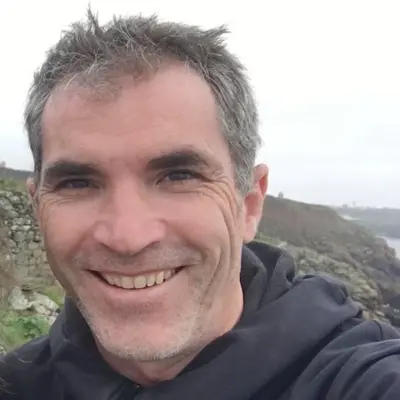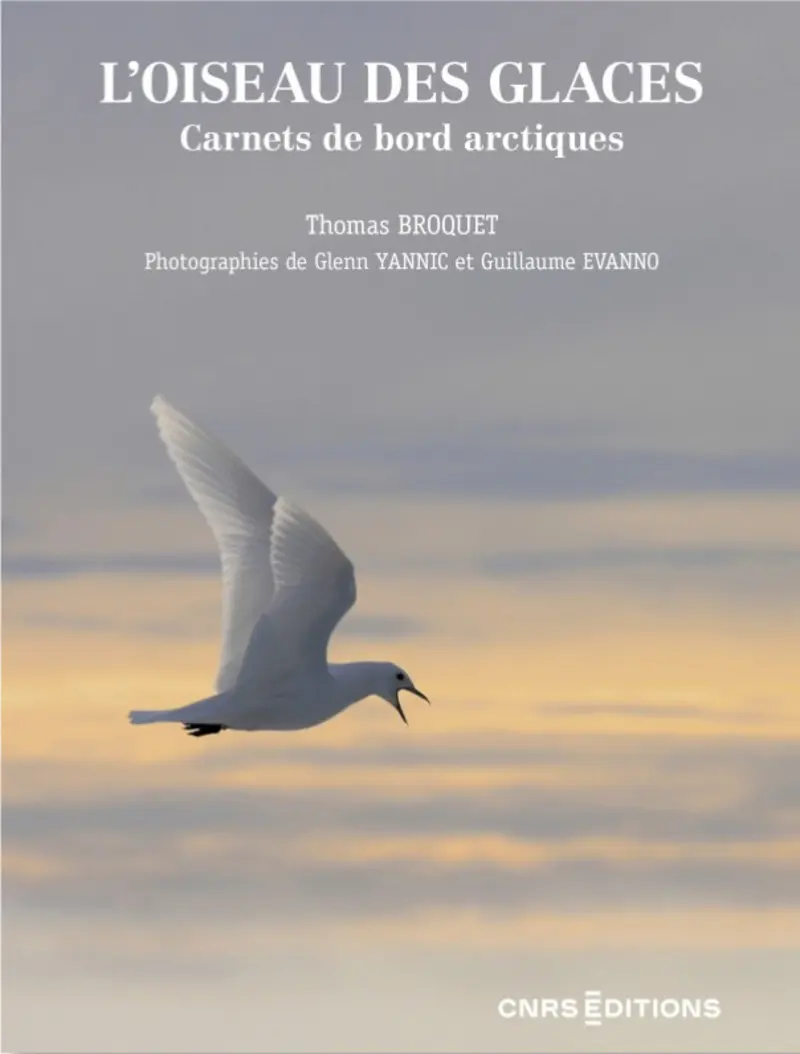
Thomas BROQUET
How do mating choices diverge to the point that they become a barrier to reproduction between populations, ultimately contributing to the formation of new species? I investigate this question by exploring the genetic basis of behavioral sexual isolation in a group of small marine isopods, where males court females using specialized setae that differ subtly between species.
I am also interested in the evolution of sexual systems and sex determination. To address this broad question, I explore the curious genetic sex determination system observed in a particular genus of deep-sea gastropods.
Finally, I contribute to the study of the reproductive strategy and overall biology of the ivory gull, a high-Arctic seabird emblematic of the ecological impacts of climate change.
All three projects are conducted in collaboration with a diverse team of researchers, engineers, students, and post-docs.
1- Evolution of behavioural sexual isolation in marine isopods (Jaera albifrons complex)
A lack of sexual attraction between individuals from distinct groups can be very effective in limiting reproduction between these groups. This barrier effect is thought to have been a key driver of speciation, but how do such sexual isolation processes evolve? What mechanisms lead to a disparity between populations in the way individuals choose their sexual partners?
To address these questions, we study the Jaera albifrons complex, a group of small marine isopods living on the shores of the North Atlantic Ocean.

In these species, females select males based on a tactile courtship involving specialised setae and spines carried by the males› peraeopods. Male sexual traits and female preferences differ between species, resulting in strong sexual isolation. We combine field sampling, lab experiments and population genomics to investigate the processes involved in reproductive isolation. Early findings point to a role for sex chromosomes (ZW system) and chromosomal rearrangements (fusions, fissions, and a reciprocal translocation). We aim to understand how such genetic factors drive the evolution of behavioral sexual isolation.
Participants
- Basile Pajot (PhD 2024-2027), Alan Le Moan (Post-doc 2025)
- Claire Daguin-Thiébaut, Stéphanie Ruault, Jérôme Coudret, Stéphane Loisel, Marion Ballenghien, Didier Jollivet, Charlotte Berthelier, Céline Houbin
- Christelle Fraïsse (Institute of Evolutionary Science of Montpellier), Erwan Corre and Lorraine Guéguen (Analysis and Bioinformatics for Marine Science)
- Rui Faria (Cibio Portugal)
Related publications
- Ribardière A, Daguin-Thiébaut C, Coudret J, Le Corguillé G, Avia K, Houbin C, Loisel S, Gagnaire P-A, and Broquet T (preprint). Sex chromosomes and chromosomal rearrangements are key to behavioural sexual isolation in Jaera albifrons marine isopods. BioRxiv (recommended by PCI Evol Biol).
- Broquet T, Destombe C, Valéro M, Jollivet D (2023). A brief history of speciation research at the Station Biologique de Roscoff (1872-2022). Cahiers de biologie marine 64:9-19 (special issue 150 years anniversary of the station).
- Ribardière A, Pabion E, Coudret J, Daguin-Thiébaut C, Houbin C, Loisel S, Henry S, and Broquet T (2021). Sexual isolation with and without ecological isolation in marine isopods J. albifrons and J. praehirsuta. Journal of Evolutionary Biology 34: 33-48.
- Ribardière A, Centanni J, Dano A, Courdret J, Daguin-Thiébaut C, Houbin C, Kerdoncuff E, Jambut S, Cordaux R, and Broquet T (2018). Female-biased sex ratios unrelated to Wolbachia infection in European species of the Jaera albifrons complex (marine isopods). Journal of Experimental Marine Biology and Ecology 509: 91-98.
- Ribardière A, Daguin-Thiébaut C, Houbin C, Coudret J, Broudin C, Timsit O, and Broquet T (2017). Geographically distinct patterns of reproductive isolation and hybridisation in two sympatric species of the Jaera albifrons complex (marine isopods). Ecology & Evolution 7: 5352-5365.
Main funding
- ANR JCJC Isobar (2013-2018)
- ANR PRC Sexisol (2024-2028)
2- Evolution of sexual systems and sex determination in deep-sea gastropods (Alviniconcha sp.)
This project originates from the serendipitous discovery of a XY sex determination system in three closely related species of hydrothermal vent species, one of them unexpectedly featuring females with gonads more of less invaded by male tissue.
We are trying to understand if we are looking at andro-dioecy or ongoing transition between hermaphrodism and gonochory.

Participants
- Louise Mosset (M2 2026)
- Didier Jollivet, Jade Castel, Claire Daguin-Thiébaut, Stéphanie Ruault
- Florence Pradillon (IFREMER)
- Chong Chen (JAMSTEC, Japan)
Related publications
- Castel J, Pradillon F, Cueff V, Leger G, Daguin-Thiébaut C, Ruault S, Mary J, Hourdez S, Jollivet D and Broquet T (2024). Genetic sex determination in three closely related hydrothermal vent gastropods, one of which has intersex individuals. Journal of Evolutionary Biology 37: 779-794 (recommended by PCI Evol Biol).
- Castel J, Hourdez S, Pradillon F, Daguin-Thiébaut C, Ballenghien M, Ruault S, Corre E, Tran Lu Y A, Mary J, Gagnaire P-A, Bonhomme F, Breusing C, Broquet T and Jollivet D (2022). Inter-specific genetic exchange despite strong divergence in deep-sea hydrothermal vent gastropods of the genus Alviniconcha. Genes 13(6): 985.
Main Funding
- ANR Cerberus (dir. S. Hourdez & D. Jollivet, 2018-2023)
- Institut de l’Océan (2025)
3- Population genetics of the ivory gull, an emblematic species of the High Arctic
The ivory gull, Pagophila eburnea, is a a species that completes its entire life cycle in the Arctic and is directly facing the consequences of climate change.
Through a long-term research program in Northern Greenland, we explore the gull’s population dynamics, breeding system, population connectivity, migratory behavior, foraging ecology, and accumulation of contaminants, in an effort to better understand this sentinel species of climate change in high-latitude ecosystems.
Outreach: book describing the project and field missions

L’Oiseau des glaces - Carnets de bord arctiques
Thomas Broquet, photographies de Glenn Yannic et Guillaume Evanno
CNRS Editions - 2025
Participants
- Stéphanie Ruault, Claire Daguin-Thiébaut
- Glenn Yannic (main PI of this project, University Savoie Mont Blanc)
- Guillaume Evanno (INRAE)
Related publications
- Charbonnel E, Daguin-Thiébaut C, Caradec L, Moittié E, Gilg O, Gavrilo MV, Strøm H, Mallory ML, Morrison RIG, Gilchrist HG, Leblois R, Roux C, Yearsley JM, Yannic G, Broquet T (2022). Searching for genetic evidence of demographic decline in a long-lived seabird: beware of overlapping generations. Heredity 128: 364-376.
- Yannic G, Yearsley J, Sermier R, Dufresnes C, Gilg O, Aebischer A, Gavrilo M, Strøm H, Mallory M, Morrison G, Gilchrist G & Broquet T (2016). High connectivity in a long-lived High-Arctic seabird, the ivory gull Pagophila eburnea. Polar Biology 39:221-236.
- Yannic G, Broquet T, Strøm H, Aebischer A, Dufresnes C, Gavrilo M V, Mallory M L, Morrison R I G, Sabard B, Sermier R, Gilchrist H G, and Gilg O (2016). Genetic and morphological sex identification methods reveal a male-biased sex-ratio in the ivory gull Pagophila eburnea. Journal of Ornithology 157: 861-873.
- Yannic G, Sermier R, Aebischer A, Gavrilo M V, Gilg O, Miljeteig C, Sabard B, Strøm H, Pouivé E, and Broquet T (2011). Description of microsatellite markers and genotyping performances using feathers and buccal swabs for the Ivory gull (Pagophila eburnea). Molecular Ecology Resources 11: 877-889.
Main funding
- Institut Polaire Français Paul-Emile Victor (programs Ivory, Ivory-2, Ivory-3, dir. Glenn Yannic)
- CNRS
- Interact
